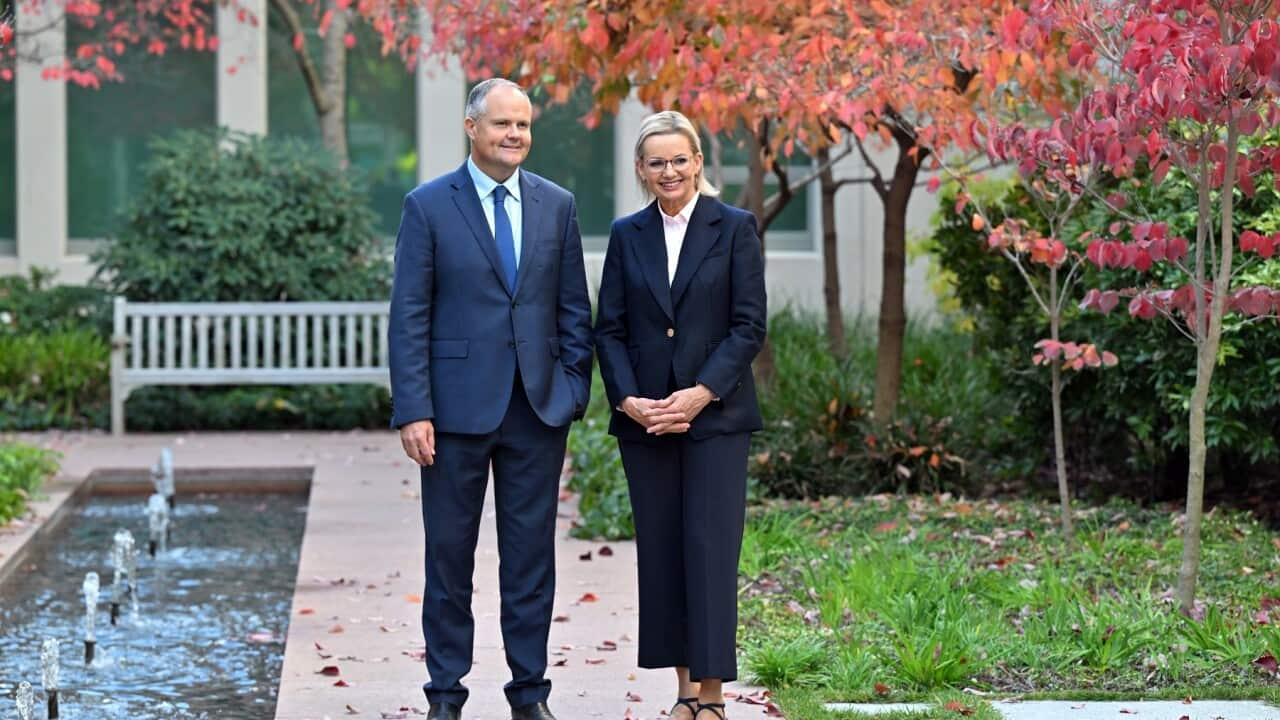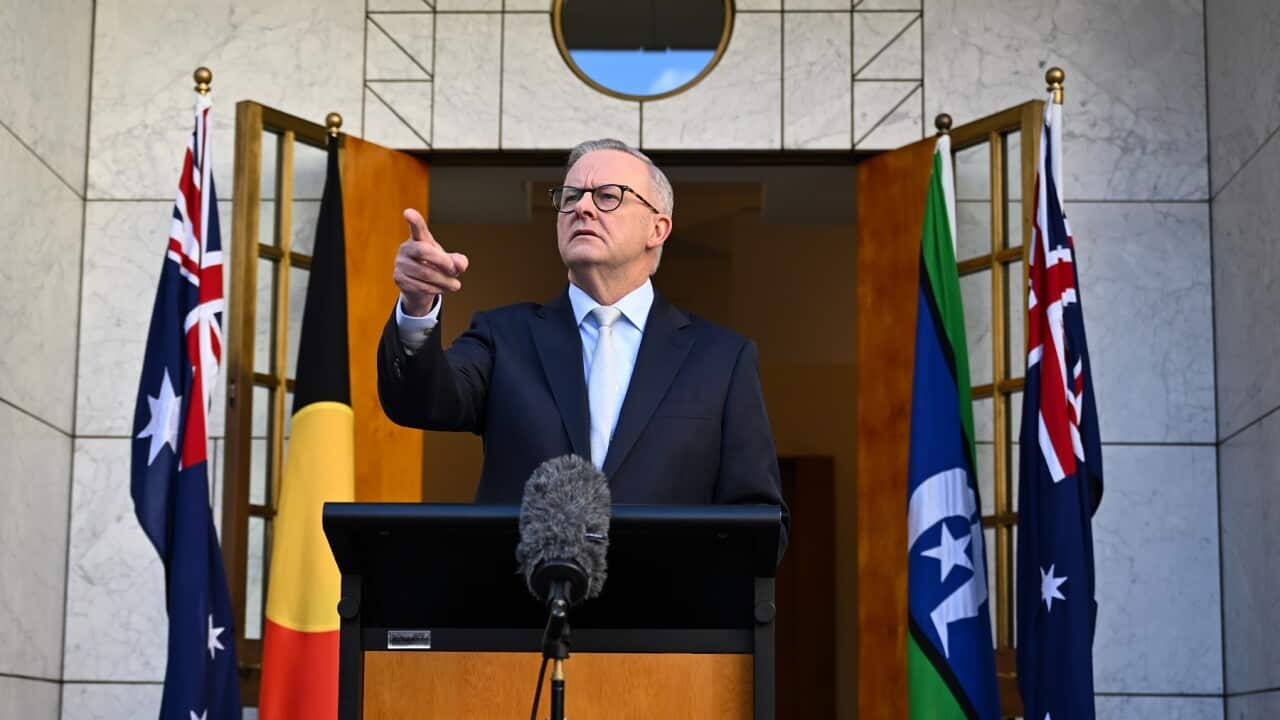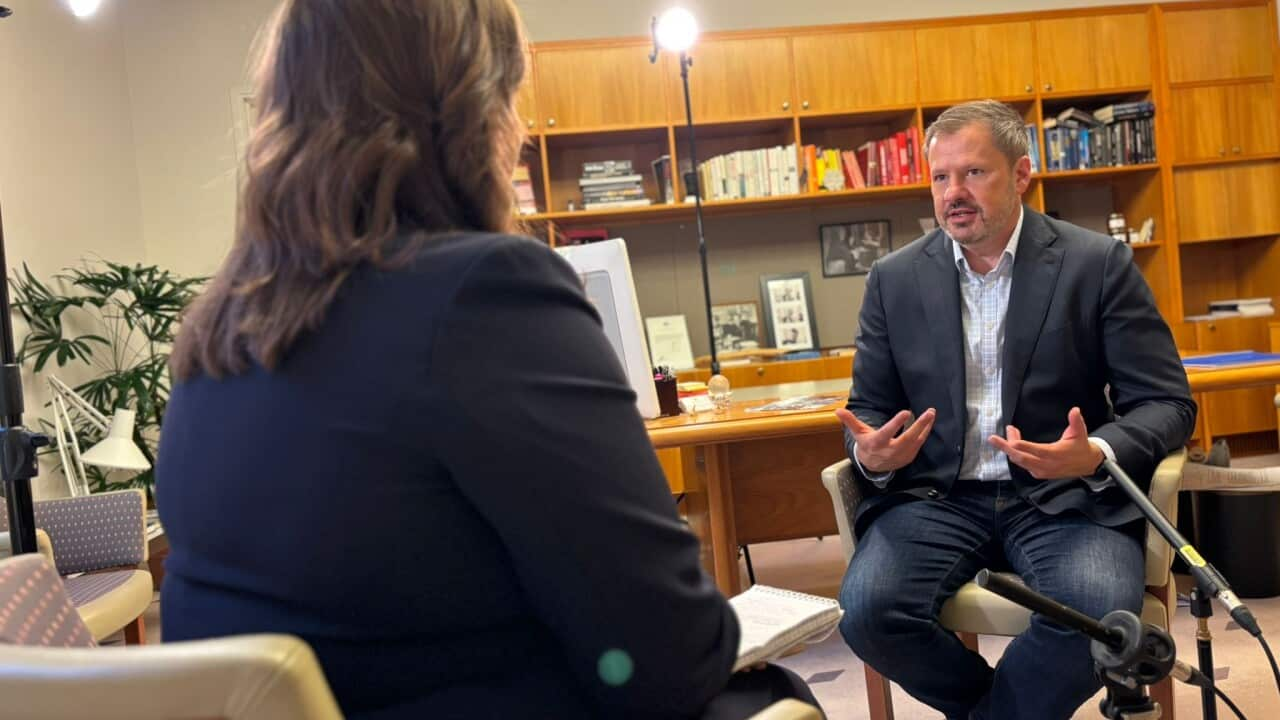TRANSCRIPT
The Australian Federal Election campaign is now well underway.
DUTTON: "Australians will have an opportunity."
ALBANESE: "A choice between Labor, committed to addressing cost-of-living pressures while building Australia's future..."
DUTTON: "...and a new, strong Coalition government to get our country back on track."
And in this episode of SBS Voting 101 we will be explaining how to actually cast your votes in the election.
That's right, I said votes, because you'll actually be casting two ballots this election, one for the House of Representatives and the other for the Senate.
So, first off, you might be wondering when and where you should be voting.
Kath Gleeson, Deputy Commissioner at the Australian Electoral Commission, explains.
"We have a lot of options for people to cast their vote. There is early voting available for people who can't vote on Election Day. And there's about 550 early voting centers across the country for the two weeks prior to polling day. We have postal voting that's available for people who can't get to an early voting center or a polling place on polling day. And then for people who are overseas, we have overseas voting available as well, either in the form of a postal vote or at an embassy or high commission overseas, and we'll have those listed on the AEC website during the election period."
You can head to aec.gov.au to find your local polling place now.
And once you get to the polls on election day, if it's your first time voting, there are a couple things to know from the outset.
"You'll often see party workers when you approach the polling place. They are there to campaign for a particular candidate, and they might be handing out 'how to vote' material that tells you the information that they want to give you about how to vote for their candidate. You don't have to take it if you don't want and you can take more than one if you like. You'll then enter the polling place, and our issuing officer will ask for your name and whether you voted before in this election. You'll get both ballot papers with an instruction, and then you'll move to a voting screen where you can cast your vote. You can take as long as you need to. You can use your phone to do your own research. We just ask that people don't take pictures in the polling place."
Ok, so you're in the booth and you've got your ballots.
From here, you might be wondering who or what it is that you're actually voting for.
When it comes to a Federal Election, many Australians think about a battle between the Prime Minister and the Leader of the Opposition.
In this case, Anthony Albanese...
"I want to seek our common purpose and promote unity and optimism, not fear and division."
...and Peter Dutton.
"A Dutton-Coalition government will provide the moral and political leadership needed to restore law, order and justice."
But that's not really how Australian politics works.
The Federal Parliament is made up of two chambers: the House of Representatives and the Senate.
In this election, your votes will help elect all 150 members of the House of Representatives as well as 40 of the 76 members of the Senate.
Usually, a political party or a coalition of parties forms government and appoints a Prime Minister once they are able to win a majority of seats in the House of Representatives.
If neither side has a majority, the winner will be whoever can secure support from enough independent or minor party M-Ps to reach at least 76 seats.
When you vote you'll first be faced with a green piece of paper where you can choose which candidate gets to represent your local district, or what's known as an electorate, in the House of Representatives.
"An electorate is a geographical area and is represented by one member of Parliament. Now, all those areas, geographical areas, are different sizes, because each electorate has roughly the same number of electors inside it, so one member of parliament represents one electorate."
Unless you are voting in Mr Albanese's division of Grayndler or Mr Dutton's division of Dickson you won't be seeing either political leader on your list of options.
"So when you go to vote on election day, you'll be voting for the House of Representatives, and you'll get a green ballot paper, and you need to number every box in the order of your choice, and that is called preferential voting. The person who achieves 50 per cent of the votes plus one is the winner of that of that election, and they then sit in the House of Representatives."
This preferential voting system is a key feature of the Australian electoral process.
It means that no vote is ever wasted, even if your favourite candidate doesn't get elected.
Say for instance you feel most aligned to a candidate who doesn't seem likely to win, lets call them 'Candidate Z', but would still prefer 'Party A' to win your district over 'Party B'.
You would number 'Candidate Z' as your first choice on your ballot and then number each following candidate in order of preference, with 'Party A' coming before 'Party B'.
Then, when election workers are tallying the votes, if no candidate wins a majority of support after all the first preferences are counted, the second preferences are tallied, then third, fourth and so on until a winning candidate gets 50 per cent vote plus one.
Now, when you head to the polls you will also be voting for a number of senators to represent your state or territory on a separate sheet of paper.
At the election, six of 12 Senate positions are up for grabs per state while the two Senate seats each in the Northern Territory and the A-C-T are also vacant.
"That voting process is a little different. It's a very large white ballot paper. You can vote above the line, and you can number up to six boxes, or more than six boxes above the line, or you can number 12 boxes or more below the line."
So, the simpler option - voting above the line - means you have to number at least six boxes for parties or groups according to your preference.
The other option - voting below the line - means you have to number at least 12 boxes below the line for individual candidates of your choice.
These candidates can be from a number of different parties.
"Then you'll fold your ballot papers and you'll take them to the ballot box, and our ballot box guard will help make sure that you put the green ballot paper in the House of Representatives box and the white ballot paper in the Senate ballot box, and then you'll exit, and maybe you'll get a democracy sausage or a cupcake or something on your way out."
Now, be aware that you must fill in your ballot correctly or your vote may not be counted.
But, if you make a mistake on the day, Deputy Commissioner Gleeson says there is help available.
"There are really good instructions on both the green ballot paper and the white ballot paper, and we ask Australians to make sure they follow those instructions when they come to vote on the day. And you can ask an A-E-C staff member for assistance if you need help on the day. If you make a mistake that is absolutely okay and understandable. The Senate ballot paper in particular is quite complicated. So if you make a mistake, you can just go back to the issuing officer and say, 'I made a mistake. Can you please destroy this one and give me a new one?' And they'll do that."
If you're not sure who your local candidates are or you'd like to use their practice voting tool you can also visit the A-E-C website at aec.gov.au.
And, just remember, it is compulsory for all adult Australian citizens who are in the country during election day to vote in the Federal Election and if you fail to you could face a fine.
One of the only exceptions is if you are seriously ill on election day.
However Deputy Commissioner Gleeson says there are plenty of options for those experiencing illness regardless.
"You will technically have a valid and sufficient reason for not having voted. But we encourage you to try and avail yourself of the other options available. So if you're able to go at some period during the two weeks of early voting or apply for a postal vote and ask for some assistance from a relative, neighbour, friend, someone you trust, to take that to the post box on your behalf, there's lots of options to enfranchise Australians."
So, if you haven't already, start making plans for how you'll cast your votes today and if you know you'll be unavailable on election day, you can vote in the two weeks prior at your local polling place or head to aec.gov.au to apply for a postal vote.
Have a listen to our last episode of Voting 101 to learn if you're eligible to vote in the first place and tune in next time as we explain how the Australian Parliament works.
But until then... happy voting!













